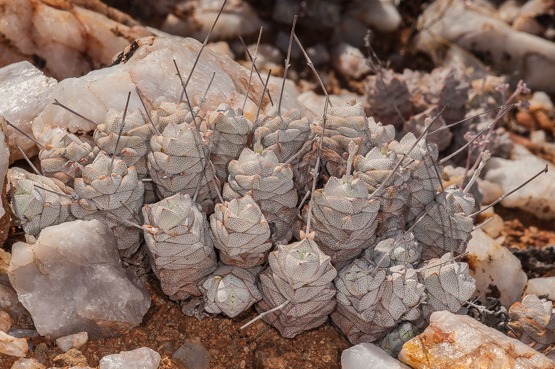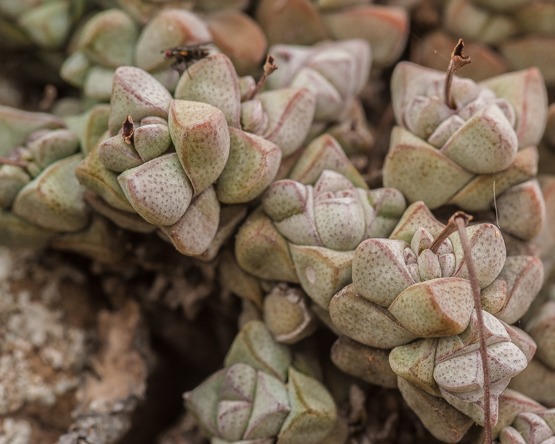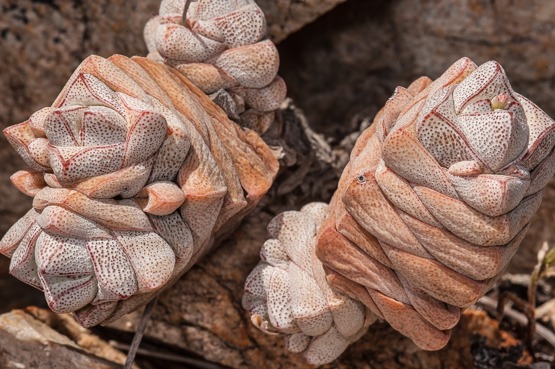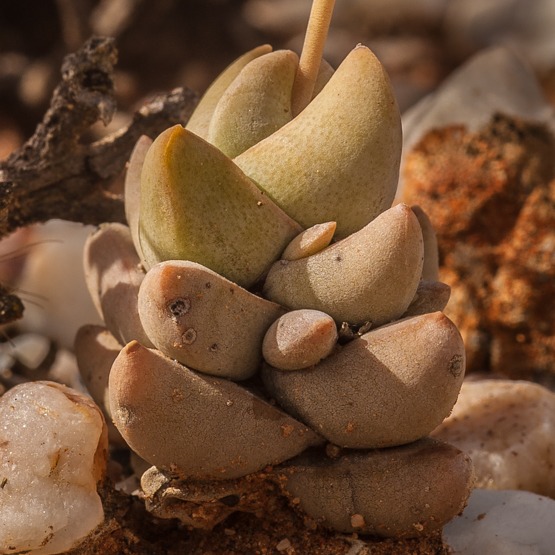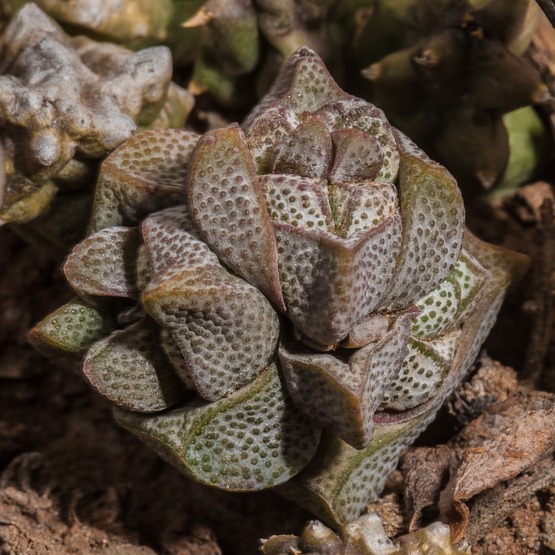Some forms of this species are among the most beautiful that Crassula has to offer and in such a big genus with many attractive species, that’s quite something. As the pictures show, the plants are variable in many respects, especially shape, size and arrangement of the leaves.
When not in flower, the plants are up to 8 cm tall, often with several short branches. Each branch forms a short, 4-angled column up to 2.5 cm in diameter, bearing closely packed leaves which are 0.6-1.5 (-2) cm long and 0.3-1 (1.5) cm wide.
The leaves are acute or obtuse, flat or slightly concave above and very convex below, somewhat boat-shaped and densely covered with hard, almost spherical papillae.
Old leaves will shrivel a lot, but stay attached to the branches.
In December-March the plants produce miniature flowers in small clusters on peduncles 2-8 cm long.
The species is widely distributed in south-western Namibia and in north-western South Africa as far east as Kakamas and south to Vanrhynsdorp, usually on gentle slopes or on rocky outcrops, often among quartz gravel.


